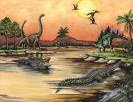TThe Tundra
Artic Tundra:
The Artic Tundra has two seasons, winter and summer.When the sun is up, it is up twenty-four hours a day.The sun only warms up the tundra from three degrees to twelve degrees. Some weeks, the sun never comes up. The tempreture drops drastically. The average tempreture is minus twenty-eight degrees but it can drop to about minus seventy degrees.
There are around 1700 species of plants that live there. There are almost no reptiles or amphibians. There are only 48 land mammals that make this habitat their home.Even though fewer animals make this habitat their home, the animals that live there, live in large numbers.
Many animals migrate to the tundra in the summer months to take advantage of the lack of predatorsand abundant amounts of food. Snowy Owls breed on the ground in the summer months, and prey on small rodents. Musk oxen, a smaller cousin of the Ox feeds on the grasses in small herds.
.Alphine Tundra:
In the summer, average temperatures range from ten to fifteen degrees . In the winter the temperatures are below freezing. The winter season is very long and can last from October to May. The summer season is short and may last from June to September. The temperatures in the Alpine biome can also change from warm to freezing in one day.
Because the cold climate of the Alpine biome, plants and animals have adapted to those conditions. There are only about 200 species of Alpine plants. Because of the cold and wind, most plants are small and groundcover plants which grow and reproduce slowly. They protect themselves from the cold and wind by hugging the ground. Taller plants or trees would soon get blown over and freeze. Most Alpine plants can grow in sandy and rocky soil. Plants have also adapted to the dry conditions of the Alpine biome.
There are only warm blooded animals in the Alpine biome, although there are insects. Alpine animals adapt to the cold by hibernating, migrating to lower, warmer areas, or insulating their bodies with layers of fat. Animals will also tend to have shorter legs, tails, and ears, in order to reduce heat loss. Alpine animals also have larger lungs, more blood cells because of the increase of pressure and lack of oxygen.
Due to global warming, the glaciers in the Tundra are melting. We must pevent more of these from happening.

Nabilah
ReplyDeleteInteresting facts!!!